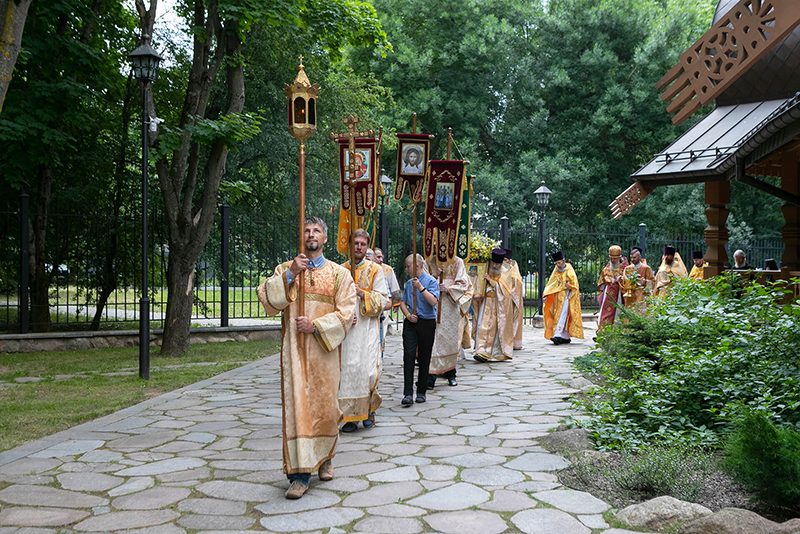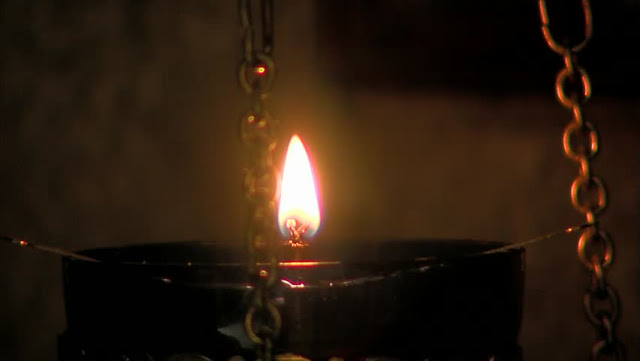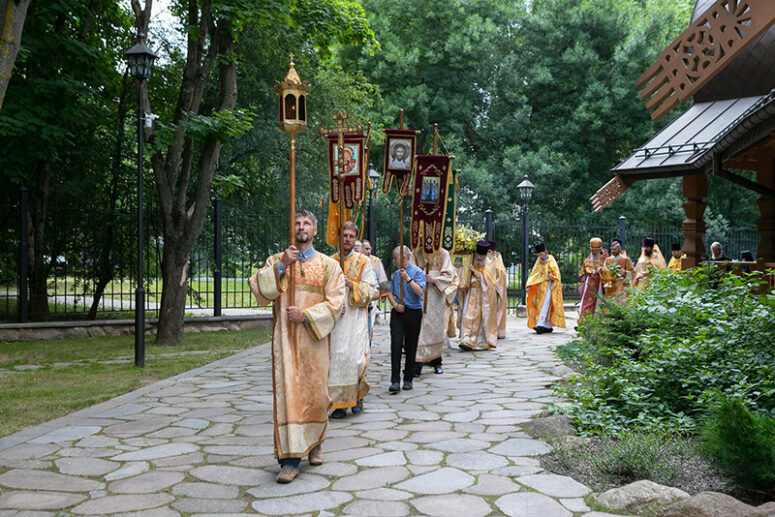
Various symbolic images of the cross existed and were used by many nations long before the advent of Christianity. But after the Passion and the Resurrection of Christ, the cross became for Christians a distinctive symbol of faith in God, since through it the Lord gave us salvation. In the first centuries of the Christian era, the ubiquitous persecution by pagans forced Christians to avoid openly depicting the sign of the cross or, even more so, the crucifixion. Only particular zealots dared to display a cross painted on their forehead or chest and die for Christ.
Christians began to use the image of the cross widely and openly only in the late-4th-century Roman Empire, during the reign of the Emperor Constantine the Great, Equal to the Apostles. This holy ruler became a Christian after a miracle was revealed to him in the form of a radiant cross in the sky with the inscription “In this sign thou shalt conquer”. Before engaging in the battle, Constantine told his warriors to make an image of a cross and carry it on a high pole in front of his troops. This banner under which the emperor defeated his enemies, is considered the prototype of the sanctuary or processional cross.
The sanctuary cross and the similar image of the Mother of God, are traditional (although not mandatory) altar accessories, commonly placed on special stands right behind the altar table, on both sides of the seven-branched candlestick or near the bishop’s throne. However, for a number of reasons their positioning in church may also vary. The sanctuary cross is brought out of the altar and placed in the front of processions, immediately behind the lantern (usually also decorated with a small cross). As a symbol of Christ’s victory over death and sin, the cross is likened to the ultimate formidable weapon of the Orthodox procession, making the cunning enemy of mankind tremble and flee with fear.
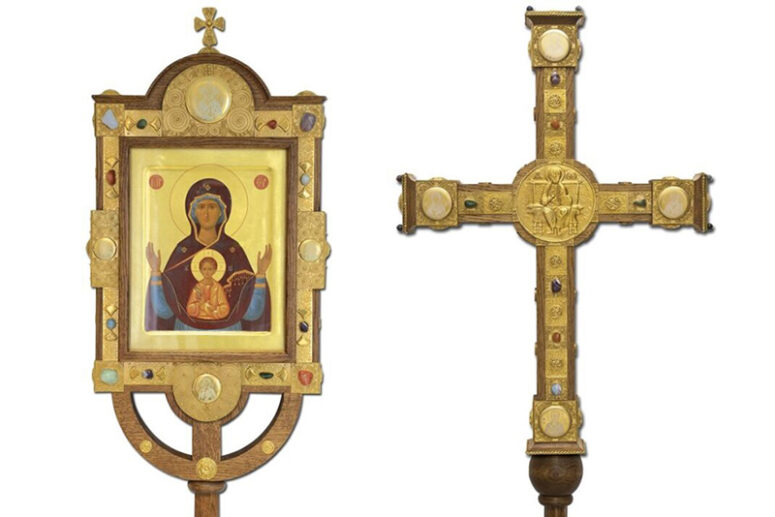
The design of sanctuary crosses is not regulated and can be varied. Although the Savior is usually depicted on such a cross, it is not always the crucifixion. Due to their role during processions on joyful and bright holidays, sanctuary crosses often depict images of the Resurrection or the Pantocrator. To emphasize its position in the altar and during the procession, the sanctuary cross and the Image of the Mother of God are placed on a pole.
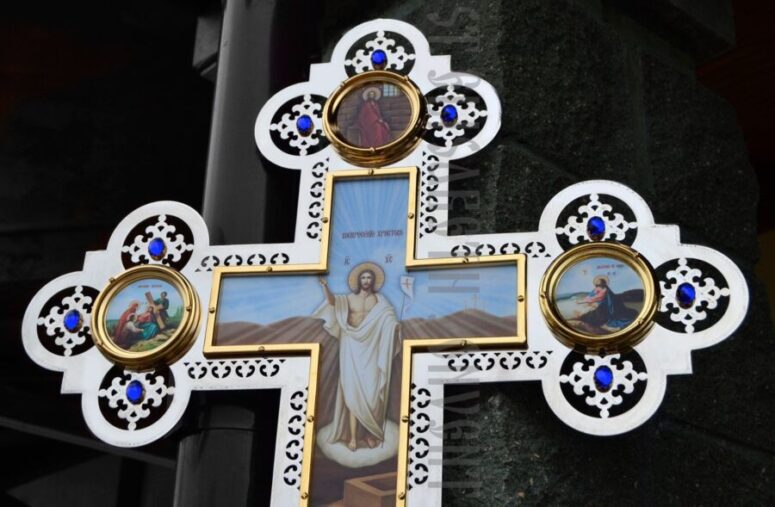
The first sanctuary crosses in Russia are believed to be the Korsun crosses, inherited by the Russian people from Byzantium immediately after the Baptism of Kievan Rus. They acquired their name from the city of Korsun (Chersonesos) where the Orthodox clergy brought from Byzantium everything necessary for divine services, including crosses. At that time solemn processions were already widespread in the East, where the processional crosses were richly decorated. They were often made of gold, silver and sometimes even crystal, which was exceptionally rare at that time.
A distinctive feature of Korsun crosses is their arms expanding slightly towards their ends to form small rounded medallions. Another widespread version of the Korsun crosses has arms with lily-shaped endings. The later works of domestic craftsmen, following these ancient prototypes, were also called Korsun crosses.
A famous ancient Korsun cross, surviving to this day, is located in the Pereslavl St Nicholas Convent. It is believed to have been brought to Russia in the 10th century. This sizable wooden cross is 208 cm high (without the handle) and 135 cm wide. It is trimmed with gilded copper plates containing reliquaries with relics of saints. The margins of the cross are decorated on both sides with faceted colored glass and small crosses made of semi-precious stones. The perimeter of the cross is lined with strings of large river pearls and glass beads. From the 17th century and to this day, many cases of miraculous healings are associated with this shrine.


During the time of the Russian Empire, sanctuary crosses made of wood were widely used. They were carved or decorated with icons painted in tempera. In the State Tretyakov Gallery, one can see a collection of sanctuary crosses acquired from different churches during the Soviet era. Many of these have a complex layout including the “Crucifixion with the Forthcoming”, the images of the Holy Trinity, the Resurrection, the God of hosts, as well as angels and saints. Such crosses are real works of art.
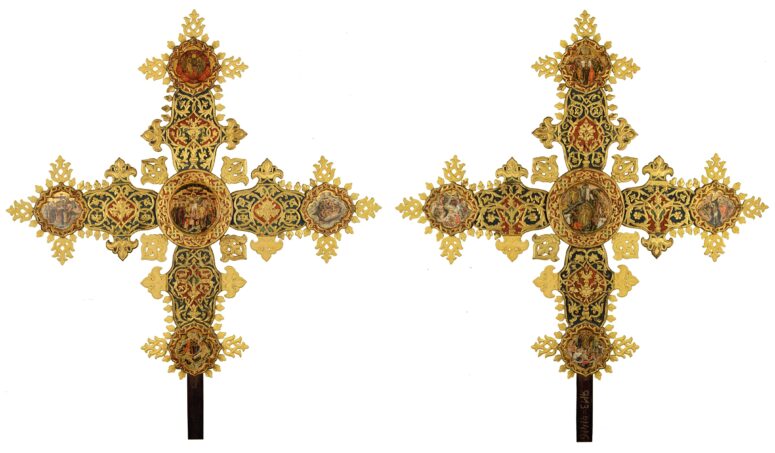
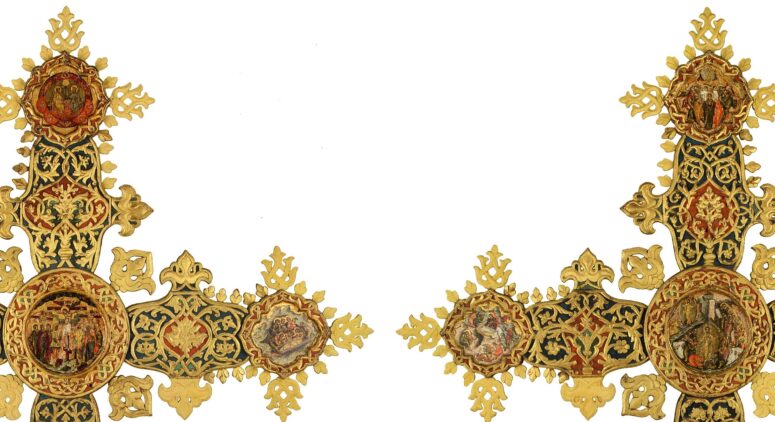
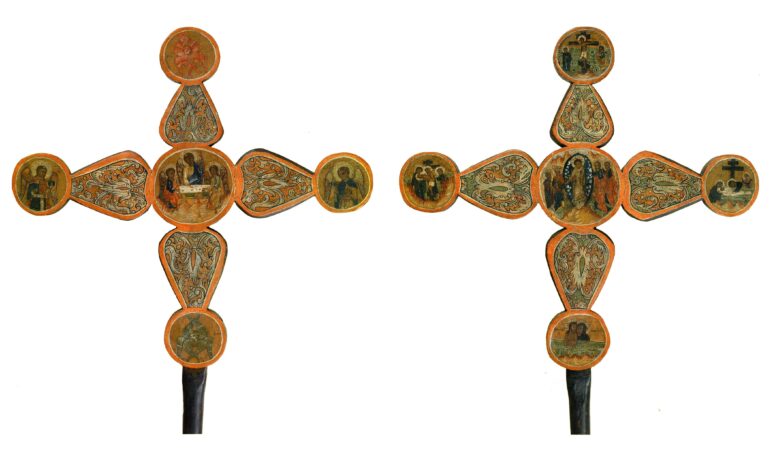
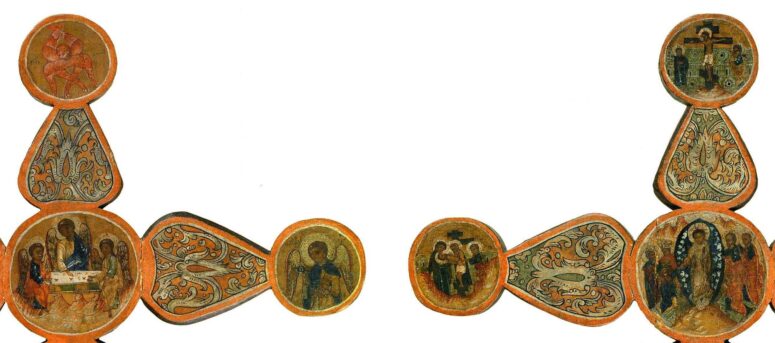

Today’s sanctuary crosses are usually made of wood and gilded or silvered brass (a fairly light and durable material), and decorated with precious and semiprecious stones. There are also carved wooden crosses.
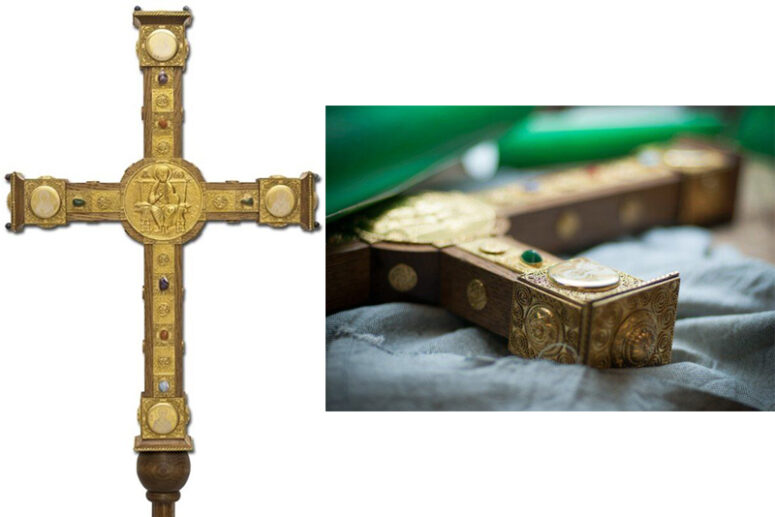

Having briefly outlined the historical path of the sanctuary cross, we see that since antiquity, believers have paid great attention to its design, thereby noting its dominant importance in solemn church processions. Over time, processional crosses tend to be designed with the use of more affordable materials, but even so, it can still be noted that the ancient traditions and the spirit inherited from previous generations are preserved in them to this day.

